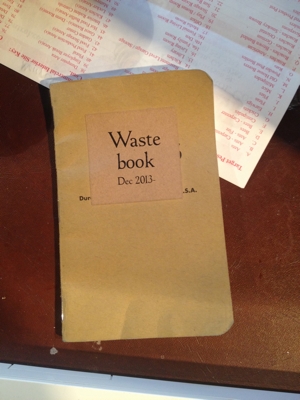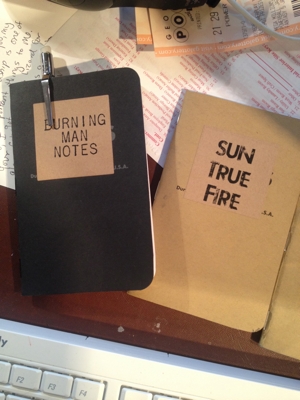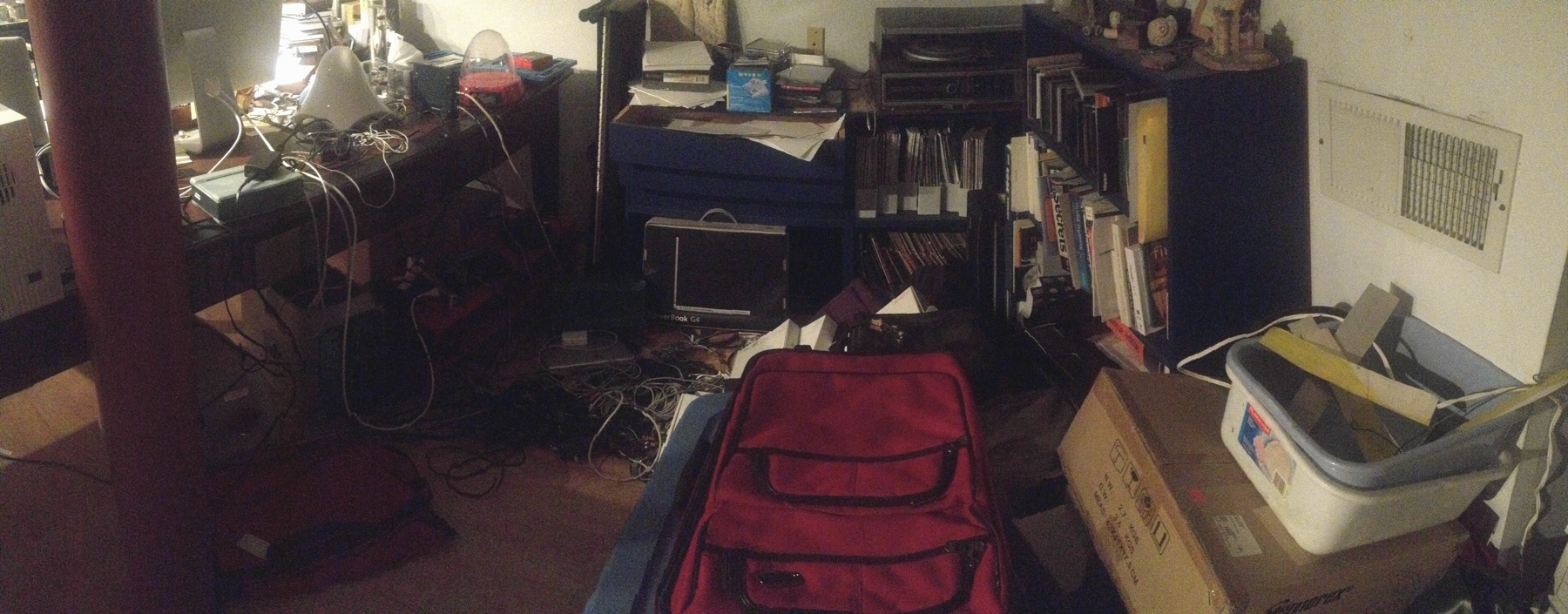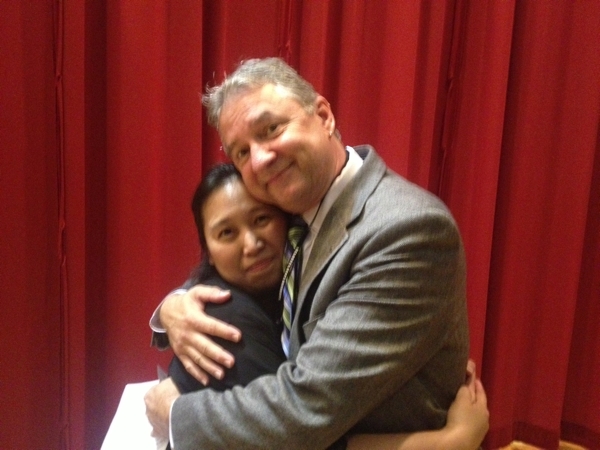In which a Woman fulfilled her Dream of Driving across This Great Land of Ours, accompanied by her Husband, who Hates to Drive
Starting a new job* sure eats into blogging time…
It’s been a week since we got home from our Great Cross Country Caper, and I think it’s time to do a post mortem.
It was amazing in the extreme. My claim of hating to drive is true, but all that discomfort dissolves in the face of the incredible landscapes through which we drove. Okay, in Texas that became an issue, but on the whole I was not going mad.
So let’s look at our itinerary and evaluate.
San Francisco
Do it. It’s a great city with tons to do. We only scratched the surface. Plan ahead for hotel rooms and Alcatraz.
Fisherman’s Wharf is fun. Don’t miss the Musée Mechanique. You can skip Ghirardelli Square: it’s a puny shopping mall, and you can actually get the chocolate cheaper at the Walgreens at Fisherman’s Wharf.
Don’t miss the sea lions at Pier 39! Shopping/dining is not bad there, either, although of course it’s all touristy.
Do drive across the Golden Gate Bridge and go up to the headlands overlook. Be advised: you have to pay a toll going south back into the city, and they no longer take money. Go here and link your rental car license plate with your credit card. You can set a time limit on that, e.g., I set it for the two days we were in SF.
Cable cars are fun, but plan better than we did. Riding the thing all the way from one end to the other is kind of pointless unless you have a destination; if the ride’s the thing, consider going up and down a couple of hills, then hop off and catch the next one going back.
Things we’ll do when we go back: Alcatraz; the Science Museum; The Presidio; Chinatown; art museums; the north headlands (which we would have had time for except for rescuing Chinese tourists). Also, we’ll make it to Yosemite.
Muir Woods
It’s an hour north of the city. Go. Just go. Plan to spend 2-3 hours exploring this beautiful spot. (Remember you have to pay the toll on Golden Gate coming back.) Send me a banana slug postcard!
Las Vegas
Unless you’re with a group of great friends with whom you can yuk on America’s Gomorrah, you can skip it. Really. Trust me. If your goal is the Hoover Dam, there are hotels between Vegas and the dam that would work just as well as Vegas and probably be cheaper. I think we would have done better to use that two days to visit Yosemite/Sequoyah/Death Valley.
Hoover Dam
Go. Its size and beauty make it an imperative. Take the full tour.
The Grand Canyon
Go, and stay at least three days. The lodges in the park require planning at least a year in advance—if Congress doesn’t crap all over your plans—but the hotels in Tusayan (right before the park) are fine.
The National Geographic Visitor Center there in Tusayan has a nifty iMax movie on the history of humans in the Canyon. It’s both fun and awe-inspiring.
The Pink Jeep tour is fun—book it at the National Geographic center—and the Sunset Tour was especially handy for us since we planned a too-short stay, but if you have a couple of days you can find your own way.
In the park itself, start at the welcome center (which we didn’t get to) and then just meander. The El Tovar Lodge is a good place to start, but make sure to go out Hwy 64 to the Watch Tower. That’s a good spot to watch the sunset, but also consider Moran Point, which is where we were taken.
Save your pennies and go on a helicopter ride. There are no words to describe the canyon as you fly through it.
Things we’ll do when we go back: hit the visitor center; stay in the park; raft; hike; take the 12-hour helicopter ride and land on the canyon floor to drink champagne.
Monument Valley
This is Navajo Nation property, so your National Parks card won’t get you in, but it’s cheap. Again, staying at The View hotel would be great, but you have to book way in advance.
If you don’t have four-wheel drive, I wouldn’t risk driving the valley on your own. Take one of the tours, preferably at sunset. Tell someone you want to end up at the last Artist’s Point for sunset. Dress warmly.
The gift shop is a good one.
Things we’ll do when we go back: camp overnight in the valley (not with my lovely first wife, but with my fellow Lichtenbergians).
Santa Fe
Take it easy here. You really are going to be hit by the altitude.
Get a hotel close to the Plaza. Ours, Las Palomas, was beautiful and convenient. From there, most everything was walkable. There is also an on-demand shuttle which will take you practically anywhere in the downtown area plus Museum Hill, although we didn’t use it.
The Georgia O’Keefe Museum is worth seeing, although as I stated before, all her iconic works belong to other museums.
The Plaza is fun, although it’s trending upper scale. The galleries are fun to visit, especially if you’ve won the lottery or embezzled on a grand scale.
Canyon Road I’m going to recommend sight-unseen. Just driving down the street was enough to convince me to come back and take an entire day poking around all those galleries.
The Museum of International Folk Art is by itself worth the trip. Do. Not. Miss. It.
Things we’ll do when we go back: Canyon Street galleries; more of the museums downtown and on the hill; more walking about side streets.
New Orleans
Again, try to stay 2-3 days. There’s a lot of the city we didn’t get to see, and it’s worth seeing.
Bourbon Street is great fun. Take ones and fives to distribute to the street performers: pay for your art, people! Royal Street (one street over from Bourbon) has fun shops: antiques, arts, some entry level souvenir stuff.
The famous restaurants are famous, but our best meal was on a side street. Don’t be afraid to get off Bourbon Street.
Jackson Square is OK; the street art sucks, but I highly recommend the fun of having a Tarot reading on the north side.
RiverWalk will probably be finished by the time you get there, but my guess is that it’s not going to be anything other than a mall.
Things we’ll do when we go back: the Arts/Warehouse district; more French Quarter; the cemeteries; neighborhoods of historic homes; actual jazz clubs.
Amtrak
We cannot praise Amtrak’s Crescent enough. It was comfortable, convenient, and clean. The food was excellent, and the staff was first-class. We’re already planning our next train ride.
General advice
The two weeks we traveled were a very good time: no crowds, moderate weather. I highly recommend early fall.
As you calculate the cost of the trip, remember to consider gas, tolls, admissions, entertainment, meals, postcards, postage, souvenirs. It adds up.
Get a comfortable rental car. We ended up with a brand new Ford Explorer. If you’re going to Monument Valley, you will need four-wheel drive. Ask if it has USB ports to a) charge your phone; and b) use your phone as a GPS device and as a music device.
Ask also for the driver’s manual for the car: there were things we never did figure out how to do on that car. Make sure you know how the buttons and levers for the lights and the windshield wipers work before you leave the rental place.
Buy a National Parks Pass. It’s $80, and it gets your car and its passengers into every park and recreational area on your trip. You can pick one up at Muir Woods and at other parks. There’s a list of places on the website. If you buy it ahead of time, it can take a couple of weeks to get, so plan ahead.
Check the 10-day forecast on your Weather Channel app as you pack. It’s more the highs and lows you’re packing for, not necessarily rain. It was a high of 90°-ish in Vegas and New Orleans, and a low of 28° in Grand Canyon and Monument Valley.
Whenever you’re driving, charge your phone. Also, if you’re in an area where there is no signal, switch your phone to airplane mode so that it’s not draining your battery by constantly searching for a network. Hint: major swaths of this country have no cell phone service at all.
Before you start your day’s journey, fill your gas tank. There will not be another exit over the hill, and if there is, it will have no development attached.
When you arrive at your starting point, go to the nearest grocery store/Walmart and buy a case of bottled water to keep in the car. Snacks are also a good idea. You can also save yourself the headache of flying with liquids by buying everything you need once you get there, especially if you’re not flying back. Save plastic bags to clean out your car every day or two.
Make a plan for getting photos off your phone/camera if you don’t have enough storage for the whole trip. Dropbox [dropbox.com] can make that automatic for you.
iPhone tip: Form the habit of swiping up from your lockscreen to get directly to the camera, rather than swiping open and then tapping Camera. Saves precious seconds when that elk is standing right there.
Apps I was glad I had
- TripIt: You can store all your reservations, plans, maps, etc. in this one app. Needs internet to do its thing. Trips are shareable with fellow travelers.
- Hotel Tonight: Every day at noon, participating hotels in major cities (i.e., not Amarillo) dump rooms they’re trying to get booked for the night. You can get some really good deals. If America’s Cup is in town, it will let you know that. They classify hotels as Basic, Solid, Luxe, or Hip. You can book from within the app.
- Hotels.com, Kayak, etc.: It doesn’t hurt to be able to check on reservations, book new ones, etc., especially if you’re really going to just wend your way across the country without a schedule. We used these and Hotel Tonight once we got past Santa Fe.
- SimpleResize: If you’re blogging and need to upload smaller, optimized photos, this will do the trick. Once you’ve adjusted the settings for width, etc., they stay that way until you change them. The program saves back to your Photos app as a duplicate; you have to do a little eyeballing and mental tricks to remember which ones are your duplicates when it comes time to upload. Protip: save a bunch at one time and the duplicates will all be in a row. The app takes you back out to the list of folders after every save, but that’s a minor annoyance. (iPhone only, not iPad)
- FTPOnTheGo: Only if you’re like me and prefer to upload photos directly to your own location on the server rather than let your blogging software put it where it wants. Simple to use, but set it up and test it before you hit the road and realize all your server settings are on your laptop back home.
Protip: develop a naming system for your trip photos (mine was cc + day number+ underscore + location + ordinal number); as you upload the first one, rename it and copy the stem, i.e., cc5_canyon. That way you can hit the little x to erase the gibberish name, then slow-tap to bring up Paste, paste in the stem, and then just type the next number on your list.
Also protip: I had a miniature Moleskine notebook in my pocket, and I wrote down each of those numbers and a reminder of what the photo was. Made it a lot easier to write coherently and insert the right photo without fumbling.
- DropBox: For storing excessive photos.
- StarWalk: OK on your phone but phenomenal on your iPad. (You need this one whether you’re traveling or not!)
- iWant, AroundMe, and Yelp: We tended to ask our hotel people for recommendations for dining, but on the road it helps to know how many hundreds of miles away the nearest food is.
- AAA: Didn’t help me any with the Chinese tourists because my phone was dead, but boy it would have been useful!
- Forecast: I use this all the time anyway because it’s phenomenal: it compiles data from weather radar maps and tells you how much it’s going to rain and when: light rain in 3 minutes; medium rain for 26 minutes, then clear for 15 minutes. It’s not an App Store app; it’s a web app. Go to forecast.io on your phone. It will prompt you how to save it to your home screen as an app.
- Wonkette.com: Because snark-deprivation is a terrible thing.
—————
We—my lovely first wife and I—are among the fortunate: we could afford to do this, to fly to San Francisco and then take two weeks to drive back. If I hadn’t had to start the new job* we would have taken three weeks.
It was expensive, but here’s a lesson we learned when we were a lot younger about travel: it’s worth it. True, had I still been unemployed I might have held back on buying a few things, but probably not. I had a charge card, and I was prepared to use it. And to pay it off for months if necessary. If you see something that really speaks to you, buy it. You will not pass that way again, and if you do, it won’t be there.
Even if you’re on a budget, plan to splurge on a really nice meal every two or three days.
—————
* I have not blogged about this, but the Monday after we got back from the trip, I started at my new position as director of Online Faculty Develoment at the University of West Georgia in Carrollton.
 To that end, and to all these ends, I am going to embark on a year-long waste book project.
To that end, and to all these ends, I am going to embark on a year-long waste book project. Cras melior est.
Cras melior est.


 4/23/13, 10:36 pm
4/23/13, 10:36 pm